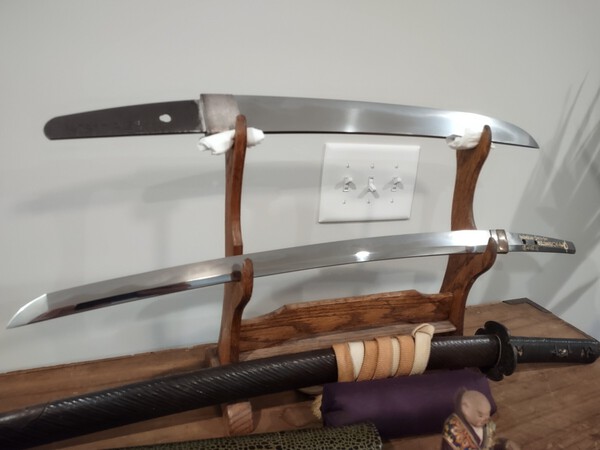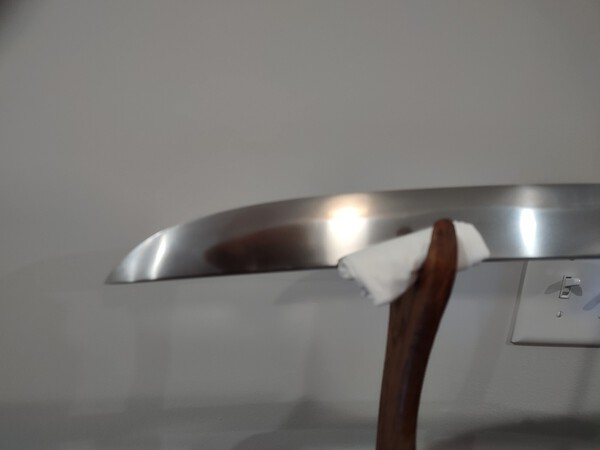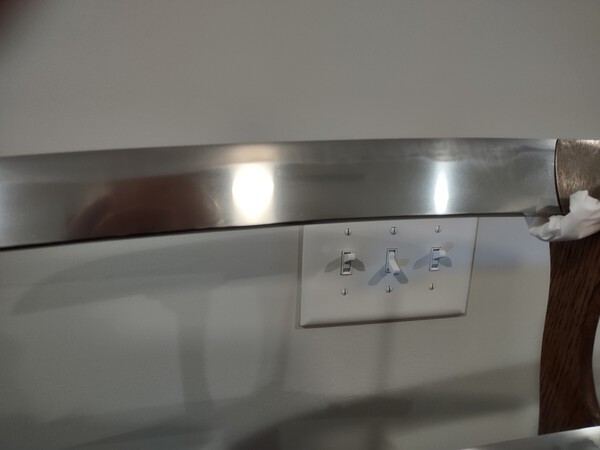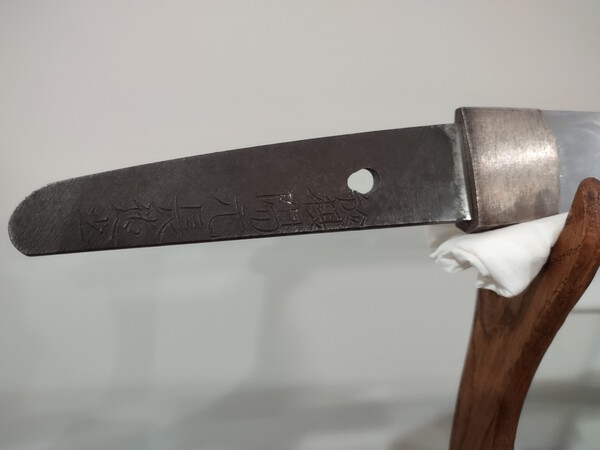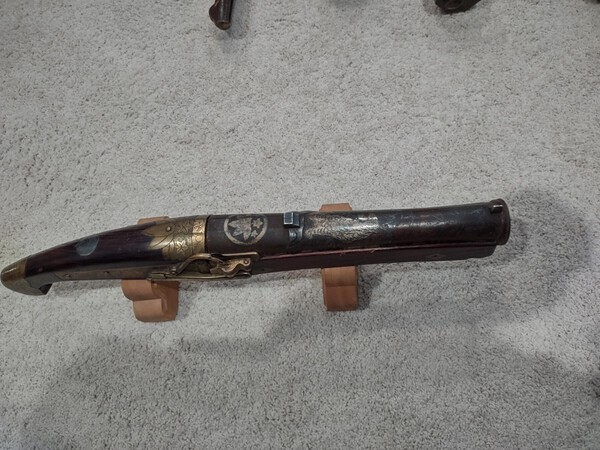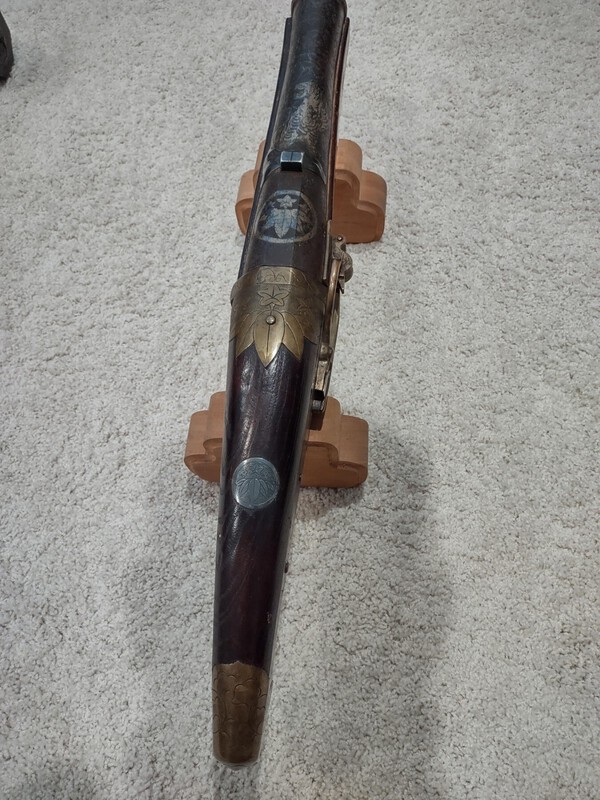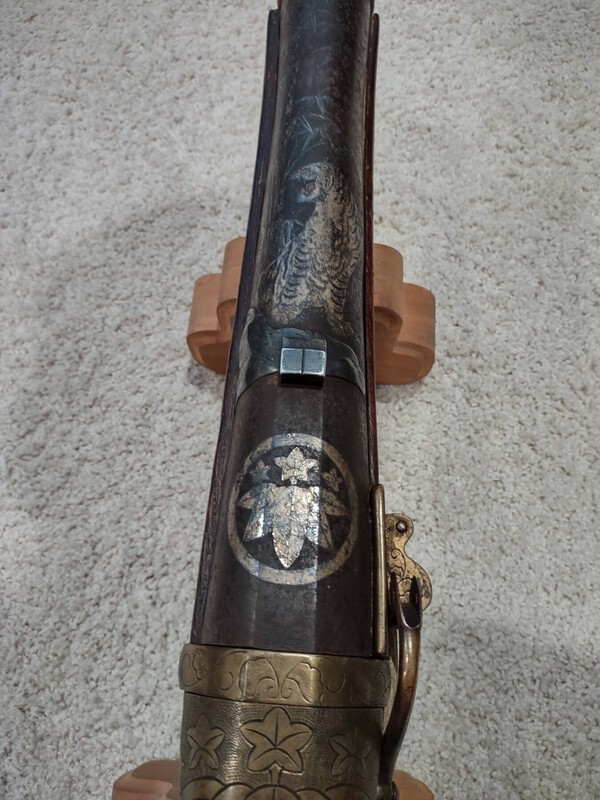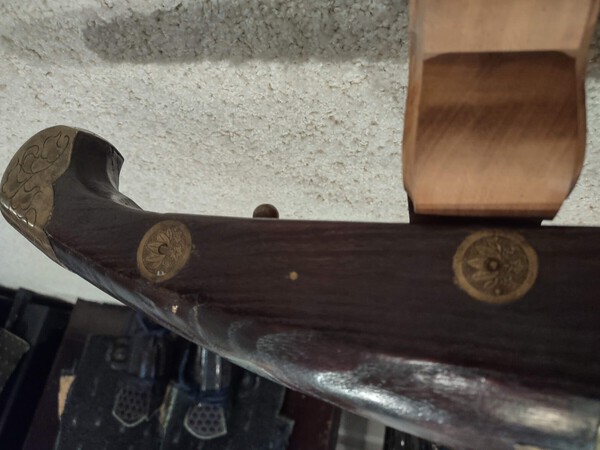
Tengu1957
Members-
Posts
351 -
Joined
-
Last visited
-
Days Won
17
Content Type
Profiles
Forums
Events
Store
Downloads
Gallery
Everything posted by Tengu1957
-
-
Koto Katana with Edo period Tameshigiri Bizen school O Suriage Katana 27.75 inches or 70.5 cm in typical Bizen school temper circa 1550. NBTHK Hozon Edo period Koshirae with matching copper Koshirae and sea cucumber style Tsuba In gold it states : Enpo 4 of Heishin 11th month 16th day November 16 , 1676 Tomita Yaichizaemon Jo Shigetsuna Ni Do Ochi , cut two bodies in half Shigetsuna is listed as a known tester in Marcus Sesko's book "Tameshigiri" . It's not common to use Koto blades for test cutting. Many thanks to Nick Ricupero at Nihontoart.com for selling this to me
-
Great sword !!!!! Nick is a great person to do business with always has very interesting items.
-
They hand guards fold forward , when you draw the sword they pop out automatically. You have to fold them forward while holding them closed. It's a spring mechanism.
-
Thanks Ray , I shouldn't have went from memory
-
Shikomizue - sword cane Wakizashi - signed Yamato Daijo Fujiwara MasaNori Ubu ,worked circa 1661 57. 2 cm Total length of cane 96 cm In the early part of the Meiji period after the prohibition for wearing swords many ex Samurai had these sword canes made to carry a sword without breaking the law . This was probably the Wakizashi that the original owner carried with his Katana. The outside of the cane is lacquered to resemble wood so it would look like a regular walking stick. When you pull the sword from the cane the two hand protectors pop out automatically. This owner meant business !!!!
-
Shinshinto Omi Yari - Ubu Signed shigegide Dated 1848 Point 56 cm , total length with Nakago 68 cm Beautiful hamon and hada. Personal name Tamon Omura , born 1808 as a Samurai of the Omura clan. Student of Naotane. The Lord of Omura clan , Matsudaira Tadakazu was a patron of Shigegide and a Kinnoto or supporter of the emperor. This clan supported the overthrow of the Bakufu or Tokugawa government Many thanks to Mike Yamasaki for selling this to me.
-
Uchi ne Signed Musashi No Kami Kanenaka Circa 1650 Tokugawa Mon on both sides , one Mon light and the other side dark An odd weapon , some have a notch like an arrow. Some have a cord , this one is not notched but has feathers. In a presentation box , I'm not sure of the entire translation but it has a Showa date. I have read that during the Edo period many high ranking Samurai rode in Kago or planequin. It was tight inside and even a wakizashi could not be drawn easily. This could be used in tight spaces or thrown at an attacker to gain a moment to draw their swords. It's a well made Yari , this is the first one I have owned. Many thanks to Mike Yamasaki for selling this to me.
-
- 7
-

-

-
Satsuma sword with Tameshigiri Wakizashi signed and dated by shinshinto Moto Oki Two months after the sword was made it was taken to Senju execution grounds and the TaiTai cut ( 2nd most difficult through the sternum and spine ) was made into the dodan ( sand pile ). The test was done by a member of the Yamada school of test cutters Toshikage . Old NBTHK green papers
-
Thanks Uwe ! I can see it was tested two months after the sword was made. I will have to see if I can find Toshikage if he is a listed tester from this period.
-
I would appreciate some help on this. I can read it was made by Moto Oki and a member of the Yamada family did a TaiTai cut into the dodan but would appreciate help in the name of the test cutter. Thanks in advance
-
Ian , thank you for the information. I have also read that sometimes Sumo carried these really thick O-Tanto or Wakizashi as a symbol of status , is there any truth to this ?
-
Shin Shinto Satsuma Wakizashi Signed Sesshu Motonaga Dated 1810 This is the widest and thickest Wakizashi I have ever held in hand 4 cm wide. 0.76 cm thick. 45 cm long It's also incredibly heavy , I have put up a normal sized Edo period Wakizashi for comparison. It has Koshirae I haven't received yet. I am looking forward to seeing what it looks like Many thanks to Mike Yamasaki for selling this to me.
- 4 replies
-
- 12
-

-

-

-
Juyo Naoe Shizu Tachi from early Nanbokucho jidai 69.8 cm I Suriage Achieved Juyo status in 1967 Tachi Koshirae papered by NPO as Edo period Hi on both sides My photos don't do it justice , the light just wasn't right Many thanks to Mike Yamasaki for selling this to me . I really appreciate the quality of this Tachi.
-
Piers , thank you for the information, Is there a specific term for this type of gun ? It does seem likely it was for firing iron pellets like a blunderbuss , I wonder in what situations this type of gun was intended for ? Its too bad your so far away or it would be nice to have you go through my matchlocks and teach me a few things , most have not been posted here.
-
No , no signature. I have seen other guns of this size and weight with conventual barrel shapes.
-
Sorry , forgot to list it. 4.62 kilos
-
66 cm total length
-
O Zutsu a small 66 cm long matchlock that has 40 mm bore so it's 100 Monnme Not completely sure what to say about this one because it's a bit of a strange shape. There is a silver Mon on the barrel and repeated on the stock twice on the side. The site has a decoration of Shakudo and the handle is decorated in brass. The shape almost reminds me of a Blunderbuss. It must have had a massive recoil when fired. Many thanks to Nick Ricupero at Nihontoart.com for selling it to me.
-
Edo period armor circa 1700 Papered Tokubetsu kisho Saotome Iyechika , a highly regarded Saotome armor maker 62 plate Kabuto The armor is tetsu sabiji or russet iron Came with two matching bitsu or armor boxes with leather cover Many thanks to Nick at Nihontoart.com for selling this to me
- 9 replies
-
- 12
-

-



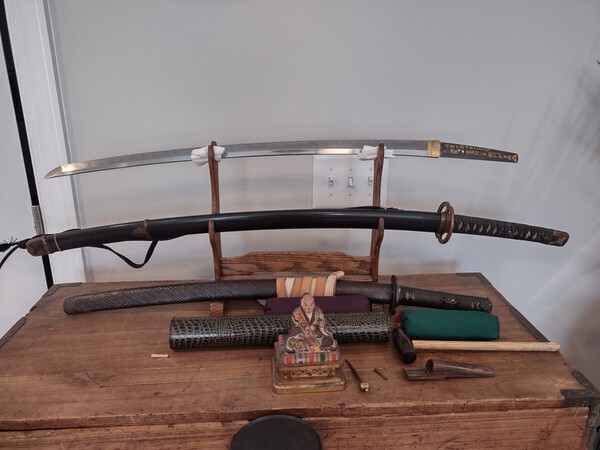







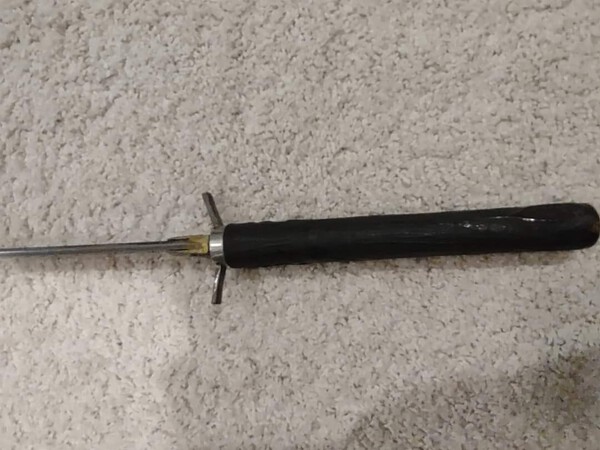


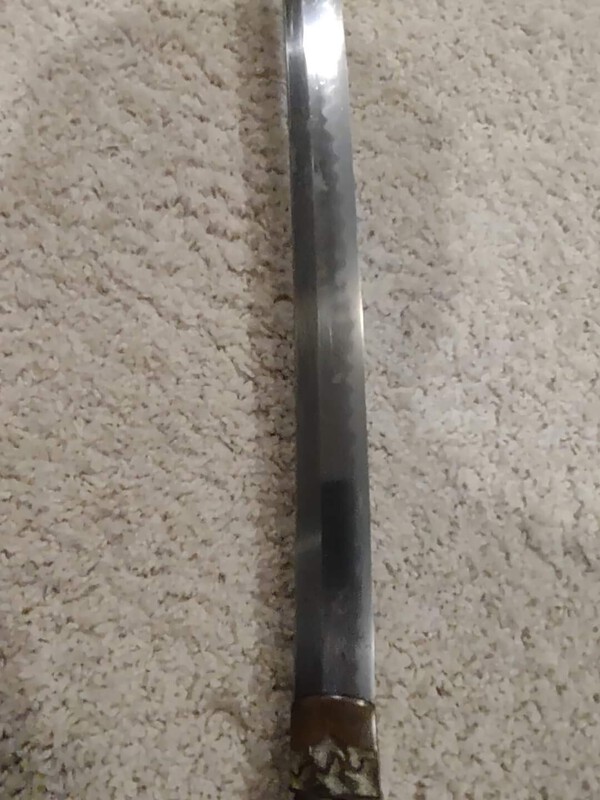






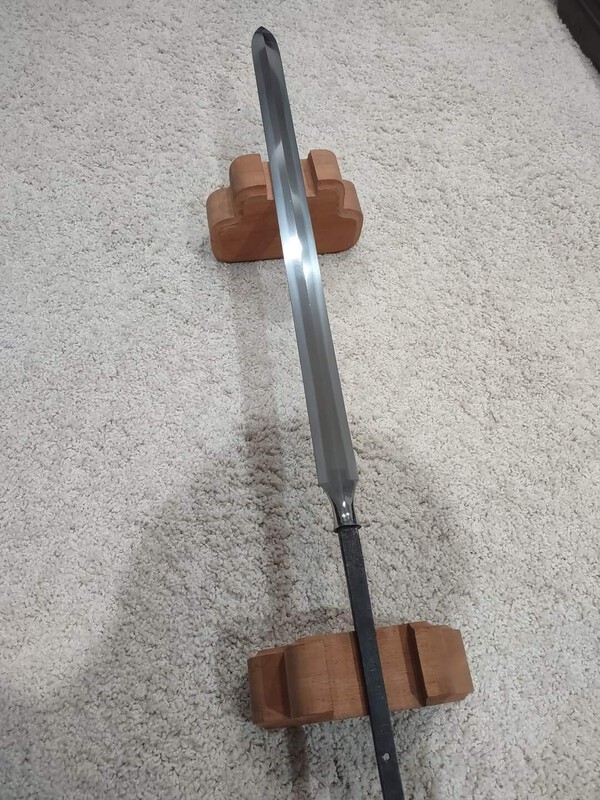

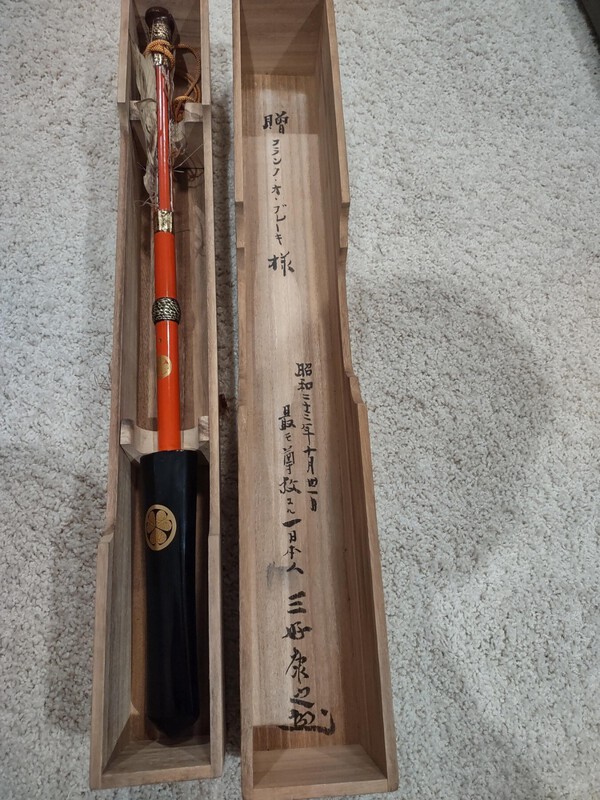
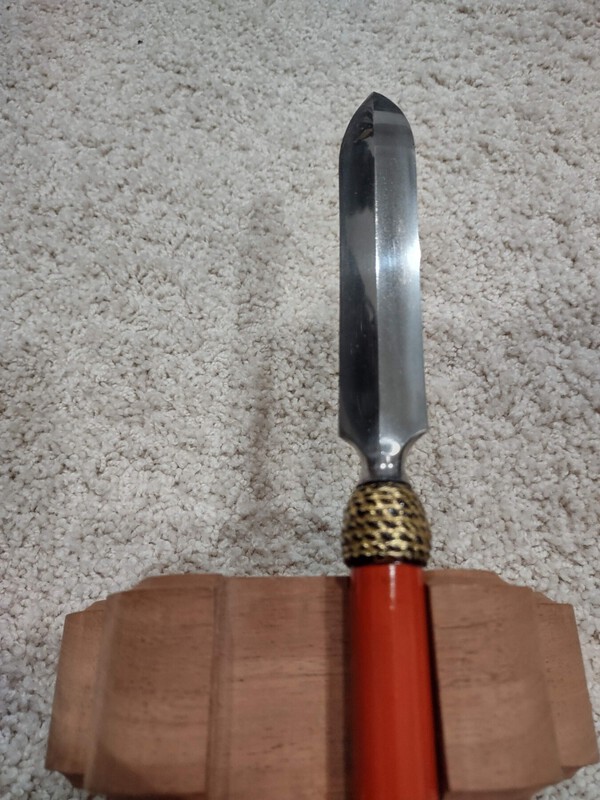
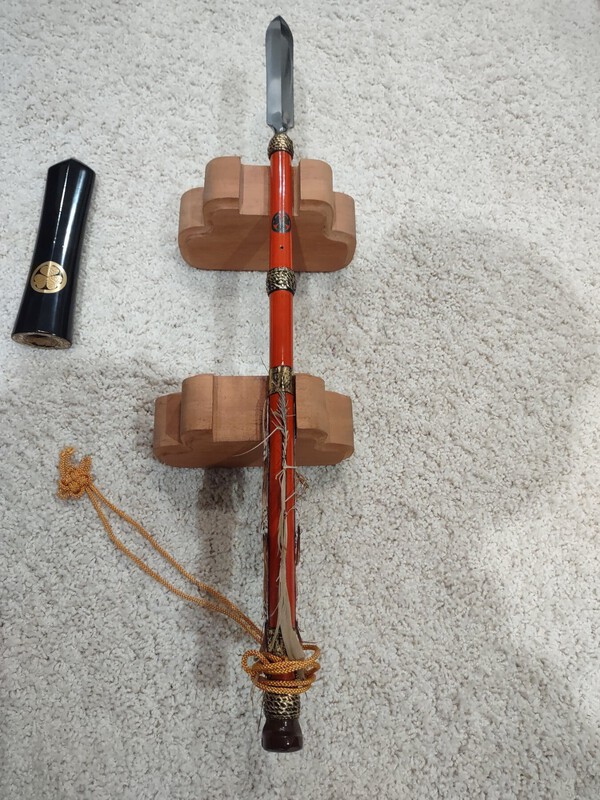
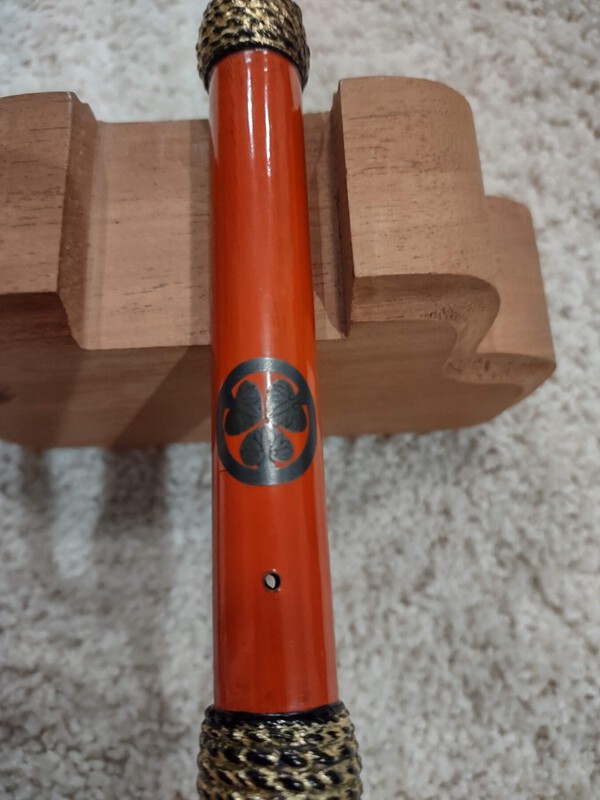
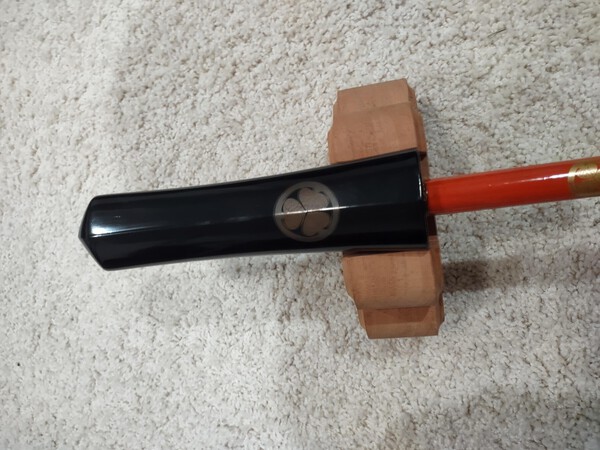
.jpeg.83254728113380f90bf34d29a51dcb94.jpeg)
.jpeg.ac3caf3996499d1156773c3cedf97dbf.jpeg)
.jpeg.80354a0bb0c6ada843dddbf890c38f43.jpeg)
.jpeg.1a4794f1fd171545861b6a829ab5f776.jpeg)


.thumb.jpeg.3cf30881c5afd7e21a01b84f51c7a619.jpeg)



.thumb.jpeg.d6095232cbb518ee84c6fc6c9c48ca61.jpeg)
.thumb.jpeg.b18bca1d5847192a2decb25c04d80491.jpeg)



